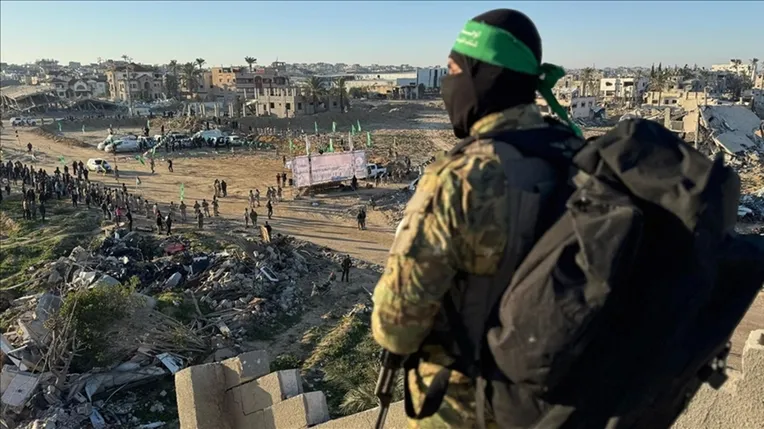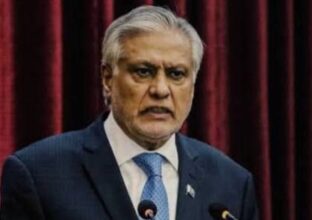Hamas response to Trump’s plan to end Gaza war: limited agreement, deep divisions over Gaza governance and political future
Al-Khamisa News Network - Gaza

The response of the Islamic Resistance Movement “Hamas” to US President Donald Trump’s plan to end the war in the Gaza Strip has sparked wide reaction after the movement expressed agreement with a number of key provisions while voicing clear reservations on political and security issues, foremost among them the administration of Gaza and disarmament.
Hamas’s reply — which observers described as a carefully measured “yes-and-no” — signaled political flexibility while sticking to national constants, and aimed to shift the ball into Israel’s and the US administration’s court after more than two years of destructive war on the territory.
Below are the main points of agreement and disagreement between Trump’s plan and Hamas’s response:
Points of agreement:
1. End of the war and full Israeli withdrawal
Hamas confirmed its acceptance of a framework that achieves a halt to the aggression and ends the Israeli occupation of the Gaza Strip, stressing the necessity of a full withdrawal without phases or conditions.
Trump’s plan, by contrast, speaks of a phased withdrawal of Israeli forces to temporarily defined lines in preparation for a prisoner-exchange operation, with a freeze on military operations and a cessation of strikes until the full withdrawal is implemented.
2. Exchange of prisoners and detainees
Hamas expressed its readiness to release all Israeli detainees — alive and dead — under an agreed exchange formula, providing the necessary field conditions for the exchange without specifying details.
Trump’s plan, meanwhile, stipulates that Hamas would hand over all detainees within 72 hours of Israel’s acceptance of the agreement, in return for Israel releasing 250 prisoners serving life sentences and 1,700 detainees from Gaza, including women and children, alongside a remains exchange at a ratio of 15 to 1.
3. Humanitarian aid and reconstruction
Hamas welcomed the plan’s efforts to expand the flow of humanitarian aid and to launch reconstruction projects immediately upon cessation of hostilities, but stressed its rejection of any form of displacement or forced expulsion of Palestinians.
Trump’s plan asserts that “No one will be forced to leave Gaza”, encourages Palestinians to remain, and calls for reconstruction to begin under the supervision of the United Nations, the Red Cross and international organizations to repair infrastructure, hospitals and roads.
Points of disagreement:
1. Administration of Gaza during the transition phase
This is one of the most prominent points of divergence between the two sides.
Trump’s plan calls for the creation of a temporary transitional administration in Gaza led by a council of independent Palestinian technocrats, under the oversight of an international transitional body chaired by Trump himself and including figures such as former British Prime Minister Tony Blair.
Hamas insisted that Gaza’s administration must be purely Palestinian, affirming its acceptance of forming an independent national technocratic government agreed upon internally and supported by Arab and Islamic states, rejecting any guardianship or international administration.
2. Hamas’s role in Gaza’s future and disarmament
The Trump plan states that Hamas “would have no direct or indirect role in governing the territory,” and outlines a plan to fully disarm Gaza, while offering amnesty and safe passage to movement members who lay down their arms.
Hamas’s response did not address the issue of weapons, but it affirmed that matters of resistance and the territory’s future should be discussed within a comprehensive Palestinian national framework based on international law and UN resolutions, indicating its rejection of relinquishing arms or being politically isolated.
National consensus and factional consultations
The Islamic Jihad movement said Hamas’s reply represented a unified position of the Palestinian resistance forces, noting that it had participated responsibly in the consultations that led to the decision and that the collective response reflects a national vision aimed at ending the aggression while protecting Palestinian constants.
The next phase
Cairo and Doha are preparing to host a new round of negotiations in the coming days to discuss mechanisms for implementing the first phase of a ceasefire and a prisoner exchange, while Israel has already begun preparing detailed withdrawal maps and lists of prisoners who could be released.
Analysts say Hamas’s response has flipped the political equation, putting Netanyahu and Washington in a reactive position rather than an imposing one, at a time of growing international pressure to end the war and open a new political track toward a lasting solution in Gaza.





